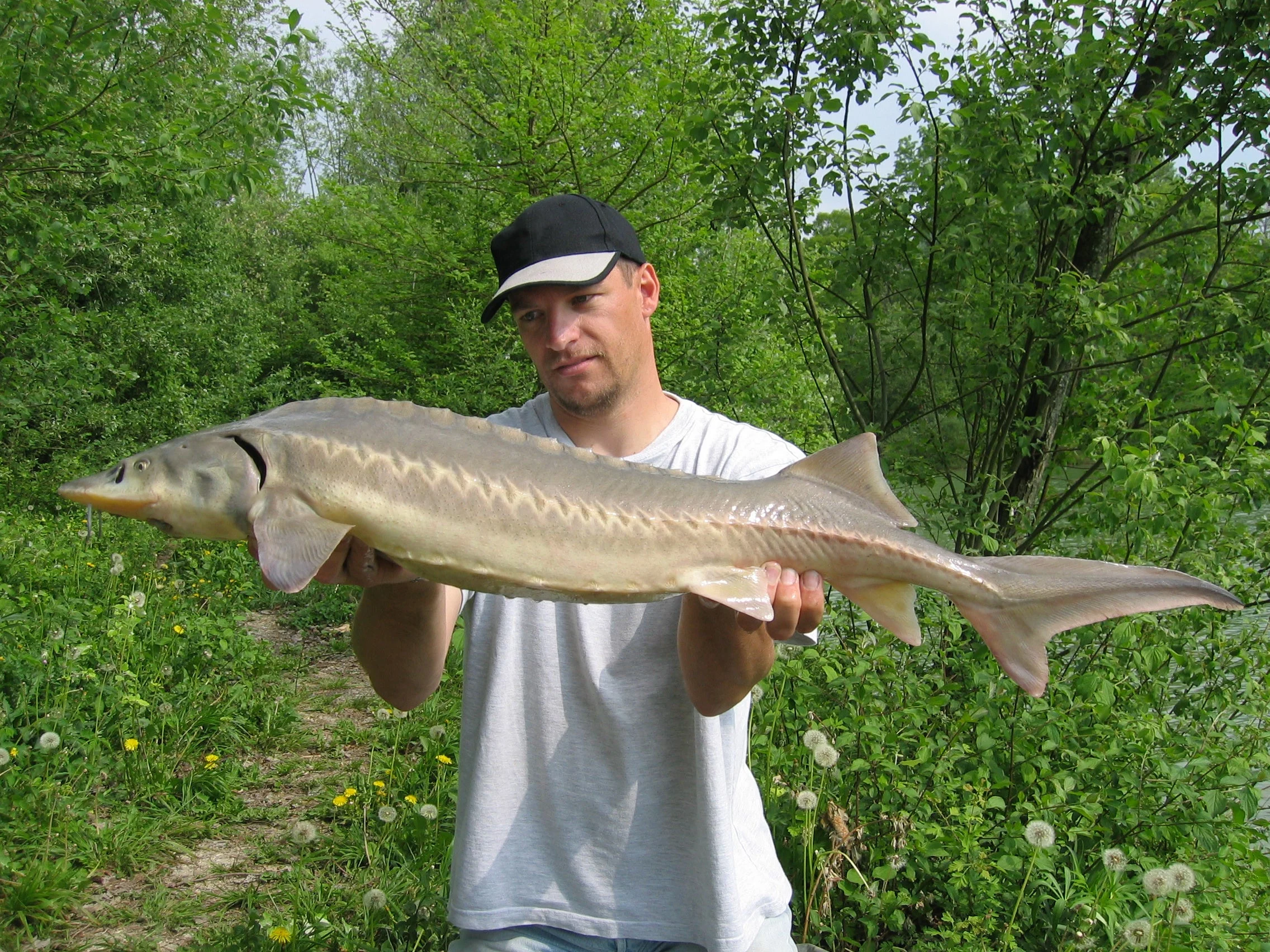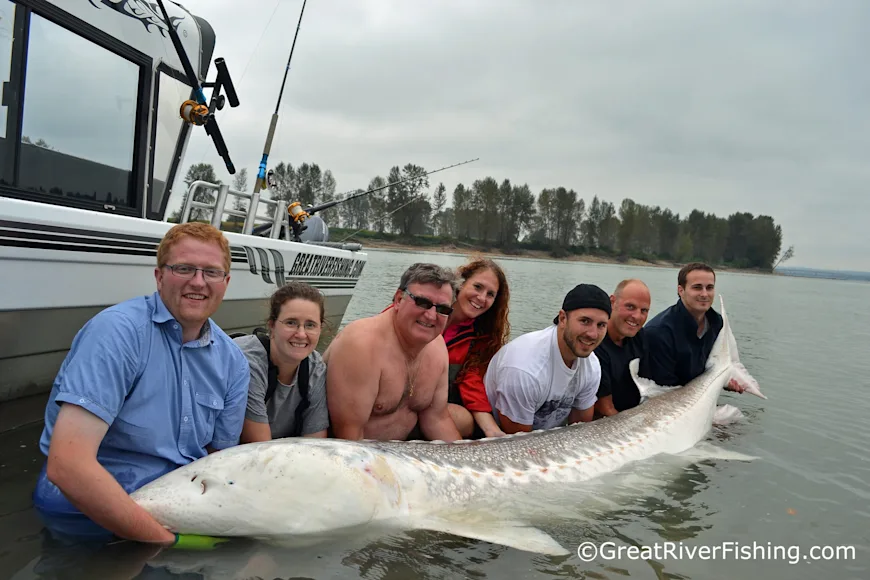The first time I ever hooked a big white sturgeon
I was mesmerized. It was on the Columbia River on the border between Washington and Oregon. I’d chased all kinds of fish the country over, but never before had I been on a body of freshwater armed with rods and reels capable of battling bluefin tuna miles offshore in the deep ocean. When I set the hook, nothing happened. It felt as though I’d simply snagged the bottom. Then the bottom began to move. Soon, the fish on the other end was peeling line at high RPM off the massive reel as it ripped downstream. A hundred yards downriver, I watched as the 300-plus pound sturgeon jumped clear out of the water, landing with such force it was like a bomb had been dropped. It would be another 45 grueling minutes before I finally reeled it back to the boat.
**Read Next: The Biggest Sturgeon Ever Caught
**
Of all the sturgeon species, Pacific white sturgeon are the biggest in our country, but certainly not the world. In many cases, sturgeon are highly regulated and you’re often not even allowed to target them, so it’s imperative that you check regulations before making any attempt. But if you want to know how big do sturgeon get—and what you’ll be up against if you catch one—let’s look at exactly how gargantuan some of these distant cousins of sharks can grow.

This white sturgeon is by no means a record-breaker—but even the small fish fight hard. Adobe Photostock
How Big Do White Sturgeon Get
The 1,100-pound white sturgeon caught on Canada’s Fraser River by angler Joey Pallotta in 2012 is the current world-record holder. However, historical data and ancient photographs suggest that long before world records were ever kept, sturgeon weighing even more were captured by commercial means in the Pacific Northwest by early settlers and Native Americans. Guide Kevin Estrada, who led Pallotta to the fish, says thanks to his propensity for setting his reel drags very tightly, the fight only lasted about 25 minutes. This is astonishing considering how hard smaller white sturgeon fight. Most impressive about this beast, however, is how many years it took for it to reach this size.
When you think about how big sturgeon get, their size is even more impressive when you consider that they’re some of the slowest growing fish on the planet. It’s estimated that Pallotta’s record was easily more than 100 years old. Historically, these fish spent most of their time in coastal estuaries, only running upriver into freshwater to spawn. However, river dams throughout their range in the Pacific Northwest have altered their migration abilities. Despite the inclusion of fish ladders within major dams, there are white sturgeon in rivers like the Columbia year-round these days.
How Big Do Beluga Sturgeon Get
White sturgeon are big, but the heaviest sturgeon ever recorded came from Europe, and it was a [female beluga sturgeon](https://danube-sturgeons.org/sturgeon/beluga-sturgeon/#:~:text=The%20Beluga%20Sturgeon%20(Huso%20huso,and%20was%207.2%20m%20long.)
that weighed an incredible 3,463 pounds. The massive fish was captured in the Volga River Delta, which is the largest delta in Eastern Europe and opens to the Caspian Sea along the borders of Russia and Kazakhstan. This fish, however, was caught by commercial methods in 1827. Interestingly, the current all-tackle rod and reel record beluga was caught in 1993 and weighs a mere 224 pounds, 13 ounces. So, why such a drastic difference how big these sturgeon got?
The answer is that the beluga sturgeon’s caviar is, and was, some of the most prized and expensive in the world. For decades, the demand was so high that these fish were harvested to the brink of extinction in Europe. When you consider how old a 3,463-pound sturgeon would have been, it stands to reason that after so many years of overfishing, the belugas that are left haven’t had enough to time reach similar behemoth sizes. While there are still pockets of commercial and recreational fishing for belugas allowed in Europe, it is highly regulated. In fact, towns along the Volga River that once thrived because of the caviar trade are collapsing in the wake of the near extinction of the species. There is, however, some good news.
Thanks to modern fish farming techniques, beluga caviar can now be obtained from fish reared in hatcheries. There’s even a beluga operation based in Florida. Whether or not some luckily angler will someday have the opportunity to reel in a 3,000-plus-pound beluga sturgeon is yet to be seen, but we can say with confidence it would take many, many decades and a much stronger push in terms of getting the species back on its feet for a catch so epic to occur again.


